Learn Music Composition and Develop a Growth Mindset
Music composition is when you create an original piece of music with or without lyrics. The idea of this post is to learn music composition as a way to build up a growth mindset. You will acquire the ability to adapt and constructively face circumstances. When you learn music composition you face challenges. You learn to overcome them as you navigate through the endless possibilities of this artistic creation.
What is a Growth Mindset?
A growth mindset perceives problems and challenges as opportunities for flourishing. Practicing is the way to learn and evolve. An observation or critique is a positive feedback of your work, not yourself. Failure is an option and effort counts towards developing your wisdom. The way you face obstacles is what defines you.
If you want to develop a growth mindset don’t criticize yourself. Remember, is not about the outcome, is about the process. Every activity is an opportunity for growth.
The outcome of an activity depends entirely on your point of view. If you think that failure is not a possibility, you need to reevaluate the way you see challenges. It is not due to your lack of talent. Nor, you should think that effort equals all the time positive results. Failure is an opportunity to grow, and many times we will encounter them.
This is not a Disney movie, this is real life.
Develop the habit of welcoming new and exciting experiences that require effort. Not only you will develop a new skill, but you will notice the way your brain becomes sharper. Don’t compare yourself to others. Instead, notice the way you progress.
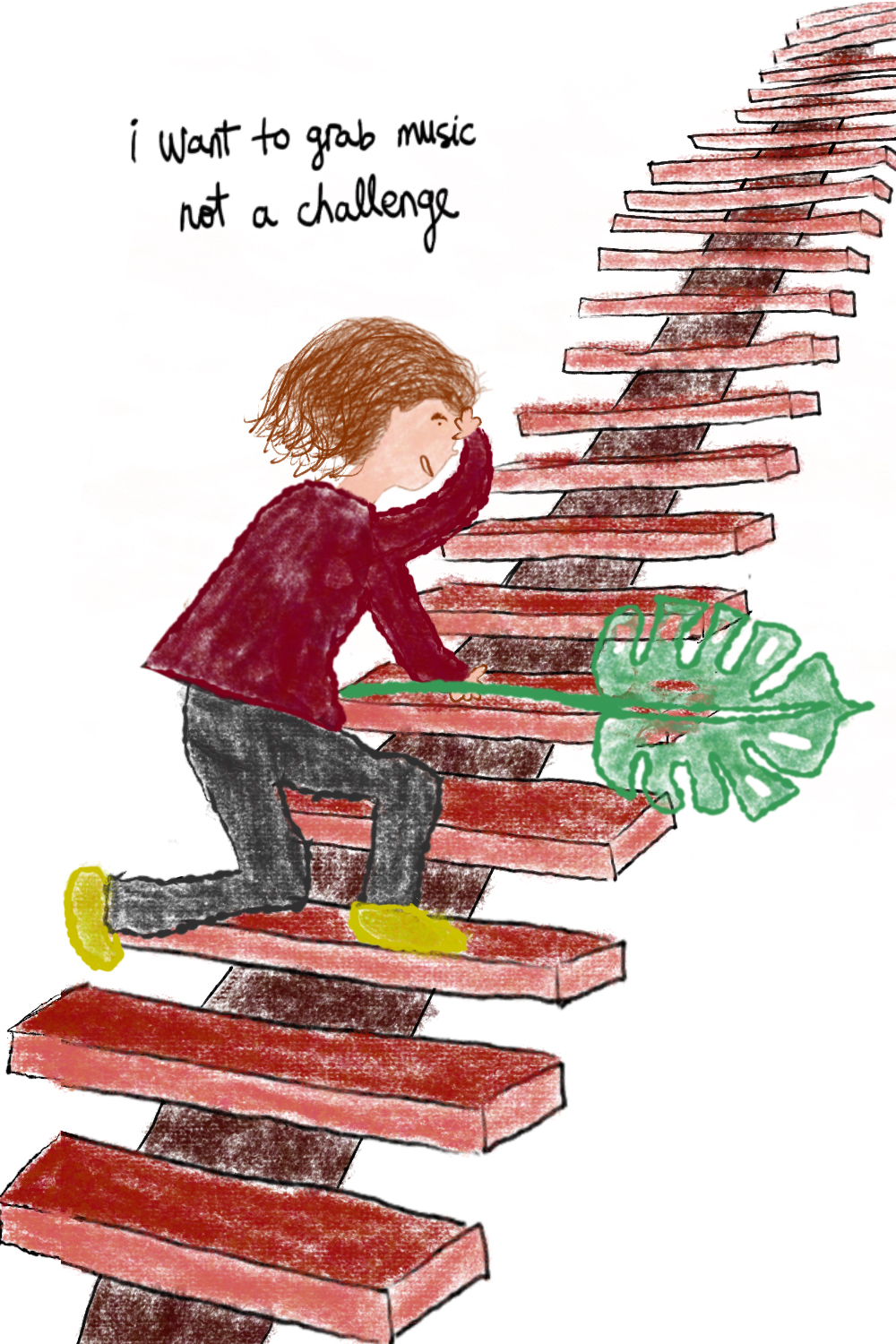
Learn Music Composition and Develop a Growth Mindset
Learn music composition and savor the way your brain responds. If you embark on artistic creations you will develop a growth mindset because you have to observe and adapt. For example, in music composition, you discover sounds and techniques every time you create.
It is a process where your brain appreciates the effort. The more you learn from it, the more you want to practice. It is time-consuming, but it is also highly rewarding. Your brain enjoys what it finds difficult. It could be harder to engage, but it is also as beneficial.
Remember, after all, your brain can learn and create new paths. When you learn music composition your grey matter grows. This is the part of your brain responsible to process information. Moreover, any artistic creation increases your grey matter.

The Beauty of Music Composition
Music is an art of expression. Inspiration comes from past experiences or from creative sparks. It could be a way to express your thoughts and you decide how explicit they are. I think that is an absolute joy from music composition. You will know the feelings behind a composition, and you get to choose how others might perceive them.
We originally evolved emotions to help us navigate dangerous worlds (fear) and social situations (joy). And somehow, the tones and beats of musical composition activate similar brain areas.
Brian Resnick
Think back to what a growth mindset is. Music composition will help you develop it. It requires hard work in music notation, or music recording, or both. Depending on how skilled you want to be, you decide how deep you dive in. You can compose music without knowing any theory. The Beatles didn’t know how to read music, and sure they composed a lot of great musical masterpieces. However, they experimented a lot in music recording.
In this post, I will show three ways to learn to compose music without knowing notation. It is a very interesting hobby to adopt because you can begin immediately. With time, you can incorporate more variables into the mix. Starting from instruments, all the way up to music production where you can create interesting sounds. Endless hours of pure enjoyment will be waiting.
Listen a Lot
Start by listening to references. That is, to music similar to the one you want to compose, or to music that inspires you. Look for numerous compositions and sit down and listen conscientiously. Make constructive observations by noticing in detail elements of the composition. That is to say, analyze instruments, rhythm, silences, repetitions, etc. Read here to learn about classical music appreciation, for example.
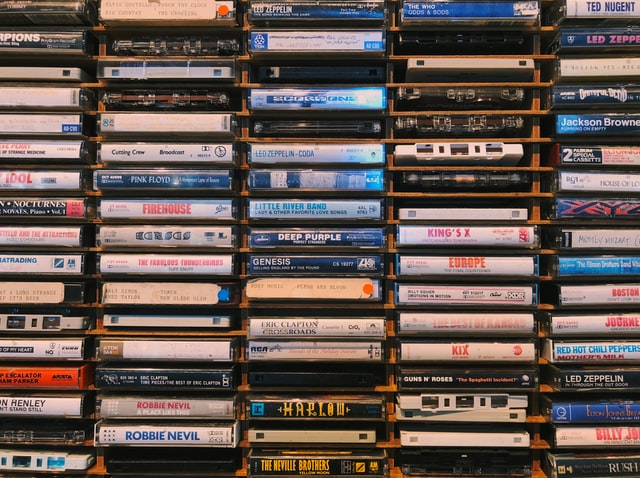
Where to Begin
Grab your tools. You will only need a computer or a smartphone to record. Of course, if you have acoustic instruments they can help you express. Add more gear if you have, or are willing to buy some. The better equipment you have, the better the quality of the recording.
The music comes from the heart and your imagination. In short, Beethoven didn’t have the gear, but he had the heart.
For this reason, let’s make it as simple as possible on the tech stuff. That way, you can focus on the intention. You will develop a growth mindset by incorporating new bits here and there with each new composition. Let the grey matter enhancement begin!
Tools to Learn Music Composition
You can choose to do everything acoustic, everything digital, or a mixture of both. For example, only piano, all synthesizers, or an acoustic guitar with some digital beats.
Whatever you decide, choose with the heart. Listen and pick the sounds that radiate your feelings. Link an intention with the available tools. Part of developing a growth mindset by learning music composition is to adapt to the resources you have. During the process, you can add interesting timbres, for example.
The importance here is to listen, to adapt, and to learn from the process. Experiment a lot and you will get to a point where you feel comfortable with the sounds you choose.

Step by Step of Music Composition
When you begin to learn music composition be aware of two major elements: harmony and melody. Think of harmony as the environment of the song. It is sad, happy, gloomy, etc. In other words, harmony can help you set the mood for the composition. That is why the harmony is in the background.
On the other hand, the melody is the main character. It is going to talk using musical notes. When there are lyrics, usually the melody is the voice. Also, the melody communicates ideas and it is sometimes catchy.
I propose three methods for you to try. Try all of them or choose the one that suits you. Also, think about what you like more between keyboards, strings, or beats.
1. Keyboards
Choose any type of keyboard (piano, synthesizer, or you can even use your computer’s keyboard). For this last option, you have to check how to enable the keyboard on windows. On a Mac, use Garageband. Once you open the application, press cmd+k and you can see a virtual keyboard like the one below.
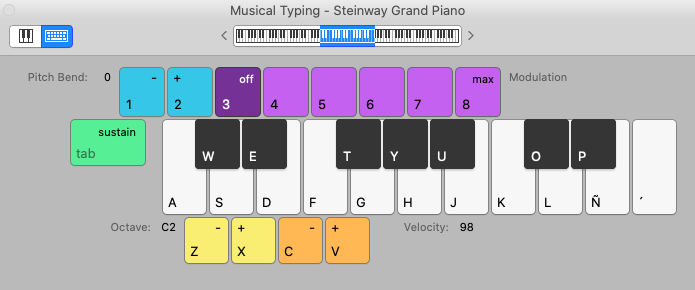
These two tips might help
1. Only play the white keys.
2. You should finish the composition in C (the musical note). This would help the composition feel like it has an end. On the virtual keyboard that corresponds to the letter A, or K. As you can see, it is the white note on the left to the group of two black notes.
Once you have your instrument, start composing! If you are using Garageband, you can listen to different sounds and choose the one that you like more.
2. Create a Loop of Chords
If you have a guitar or any string instrument, create a loop of at least two consecutive chords. Here you can learn how to play some basic chords. Once you have the chords, you are going to compose something on top of it. Remember that the chords set the mood of the song (harmony). What goes on top is the statement (melody).
Many famous songs have only two chords! Don’t underestimate the power of music. Give it all you’ve got and bring out your feelings. That is where the heart of the song is.
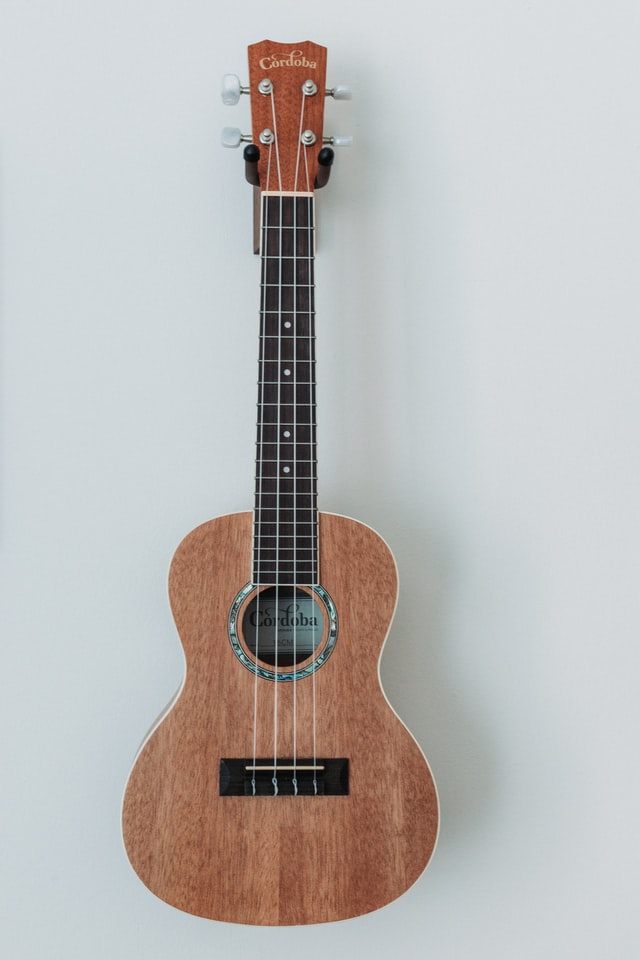
If you don’t have a physical instrument, use any software or app that has string instrument sounds. To record, you can even use your voice memo app on your smartphone. Here is also a list of all the free possibilities you have.
3. Download an App and Play Around
The third option is to download an app and play with the sounds. There are tons of apps that you can find either on iOs or Android.
The value comes from exploring and having fun. Your major asset to learn music composition is your ears. Use them and research as much as you can. With this approach, you will not only use music to enhance your well being. You will develop a growth mindset.
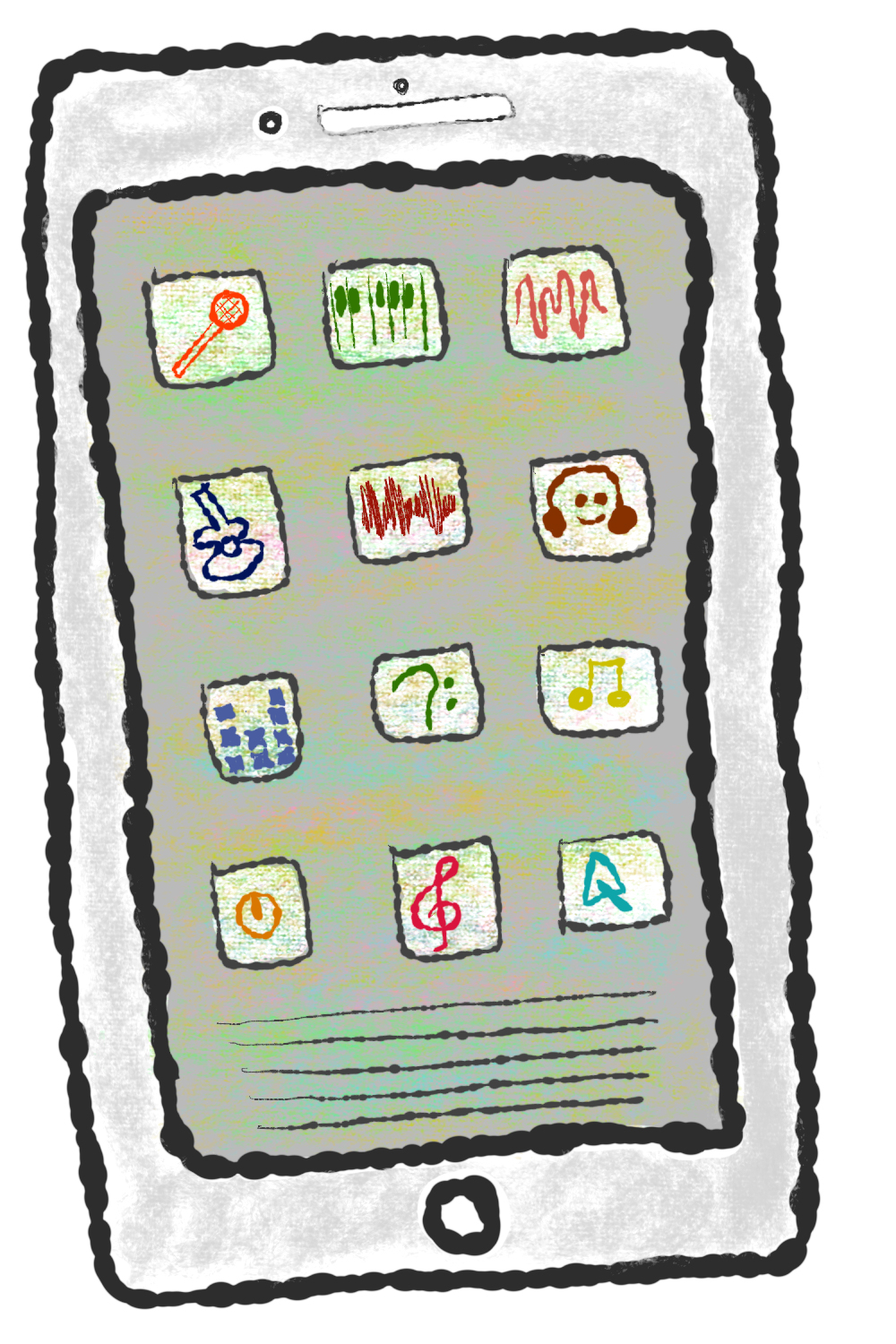
What to Expect in a Composition
Playing a keyboard, strings, or a pad can be intimidating. Also, internal voices could be in the way of the composition. Ignore them, and play freely. Let your fingers express and use your listening skills to judge your composition, not your prejudices. This is a great way to work towards a growth mindset.
Explore deeply the different sounds. For instance, listen to how they respond when you let a key pressed for a long time. Also, notice how they sound after you release the key. Compare the sounds, and put labels to them. For example, a joyful sound, or gloomy sound. This would help you decide which instrument could help you express what you have in mind.
Begin either with the melody (the protagonist) or the harmony (the ambiance), then switch. It is a personal preference. I like to set the mood and then introduce the main character.
The Beat
I only explored the elements of melody and harmony. Another major part is the rhythm. This is how fast or slow you want the song to be. You can play with this element and add some drums, for example. This is the pulse of the song. Think of the heartbeat. When you are relaxed it is slow, and when you are stressed it goes faster. The same happens with the beat of a song.
Go as far as you want. Check tutorials on how you can improve your recordings. Here is a great site to start. You get to decide when your composition is finished. Like with any artistic expression, it is a personal choice. Obviously, the more you know and learn from music composition, the better you can express yourself.
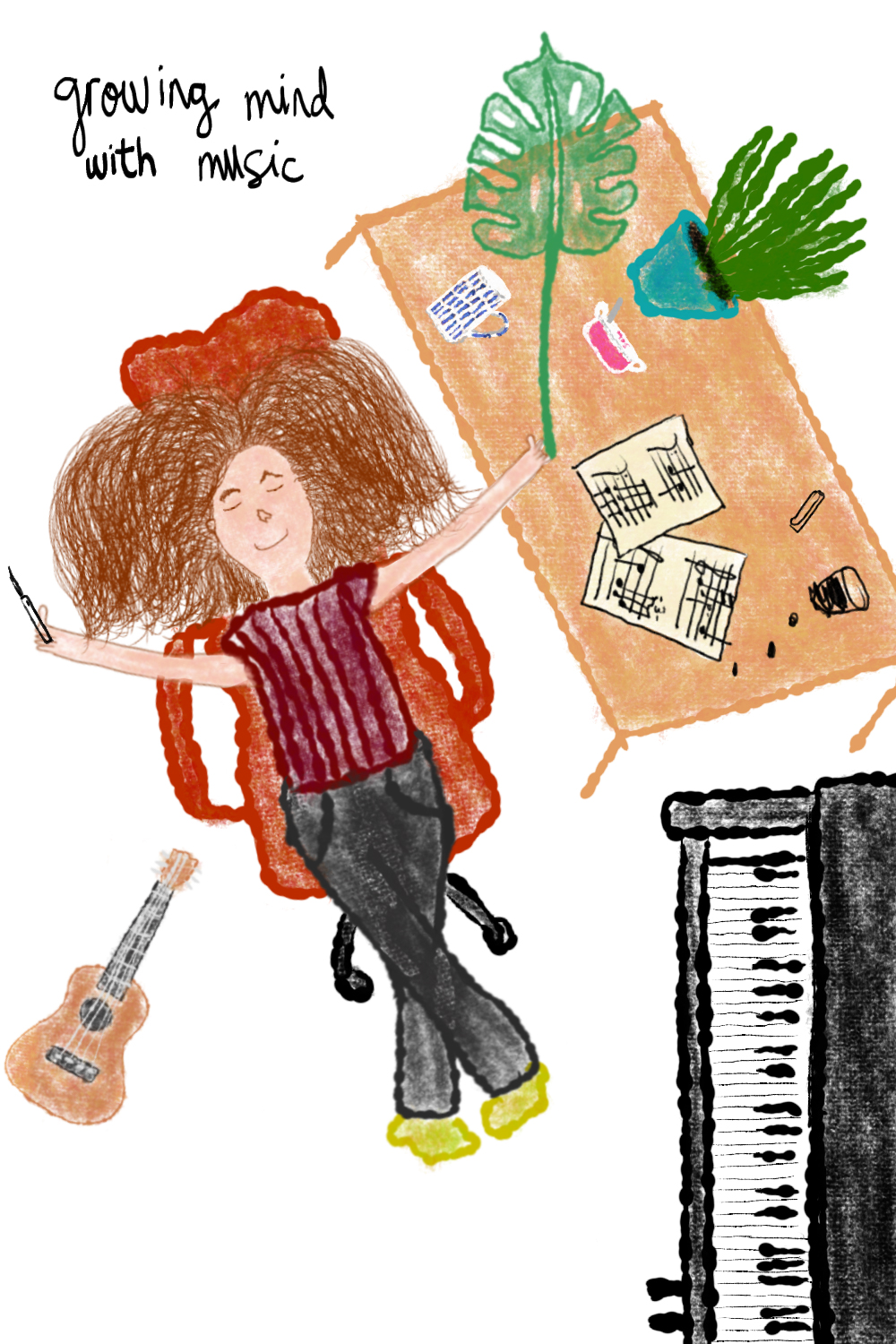
Your Mind When You Learn Music Composition
The methods I propose here have almost infinite possibilities for music composition. This can work if you put the work into it. It’s not a straightforward activity like turning on the TV, but it is much more rewarding.
You will feel like your brain is growing. There will be more tools to express your feelings. When you learn music composition, you create connections in your brain that will make you more resilient. Hence, it will help in developing a growth mindset.
All and all, take advantage of music. With so many tools offered nowadays, it would be a waste not to learn music composition.


4 thoughts on “Learn Music Composition and Develop a Growth Mindset”